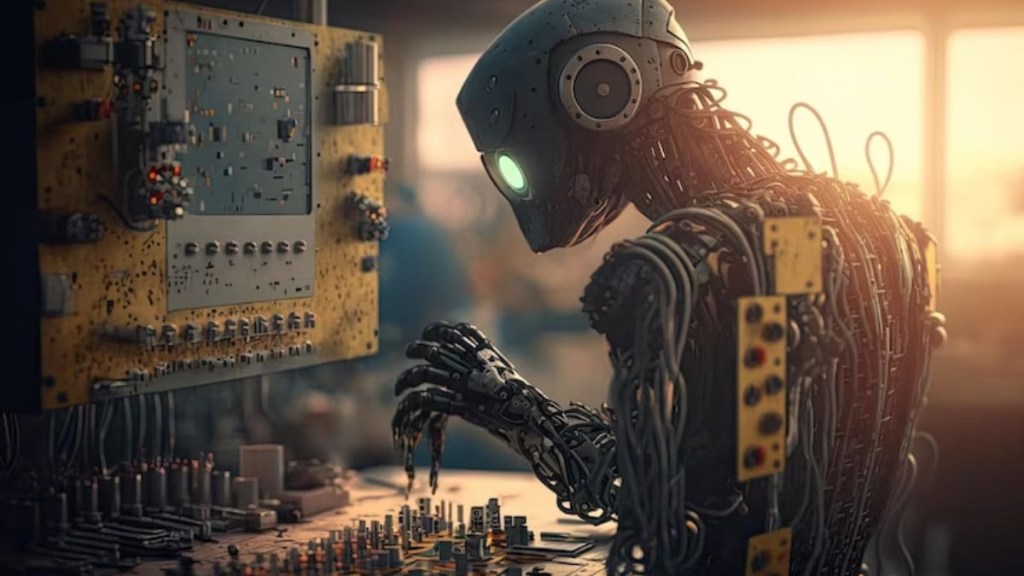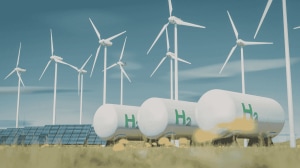With the rapid development of robotics and automation, experts believe that the Internet of Robotic Things (IoRT) can be the next trend in automation. From what it is understood IoRT can allow robots to interact, exchange data, and work together with other Internet-connected objects and systems to create more intelligent and adaptable applications. By increasing robotic system utilisation and decreasing downtime, IoRT might result in resource optimisation. IoRT’s modular design facilitates flexible deployment, making it simpler to update and incorporate new robotic technology. “ IoRT integrates robots and intelligent machines into the broader network, harnessing the power of robotics and IoT. This interconnectedness can be a game-changer for automation, reducing human intervention, and enhancing precision, efficiency, and adaptability in automated processes,”Rahul Paith, CEO, MATH (supported by Department of Science and Technology and T-Hub) told FE-TransformX, adding that this can reduce operational costs and bring innovation in the form of intelligent, self-directed robotic systems.
Use cases of IoRT
The market size in the AI Robotics market can reach $19.01 billion in 2024, as per insights from Statista, a market research platform. Reportedly, the market size is expected to show an annual growth rate (CAGR 2024-2030) of 11.63%, resulting in a market volume of $36.78 billion by 2030. The market for IoRT can reach $210 billion by 2032, with a 25.6% Compound Annual Growth Rate (CAGR) from 2022, as per insights from Future Market Insights, a market research platform. For example, in healthcare IoRT enables real-time data exchange in surgical robots and facilitates remote patient monitoring. Agriculture can also benefit from precision farming and drone-based agriculture powered by IoRT, optimising agricultural processes. Apart from this retail use of IoRT in robotic assistants that can assist customers, manage inventory, and provide real-time information. IoRT is expected to equip robots with the agility to adapt in real-time to fluctuating conditions, eventually enhancing operational efficiency. “IoRT in automation enables real-time communication and collaboration between robotic devices, sensors, and other interconnected objects, leading to enhanced coordination and efficiency in automation processes. It also enables analysis of large volumes of data generated by robotic devices and using machine learning algorithms for predictive maintenance, optimisation, and decision-making” Robinson Philipose, CEO and co-founder, ARAPL RaaS, a technology company for warehouse automation, explained.
Experts believe that in logistics and supply chains, autonomous vehicles and warehouse automation, connected through IoRT, enhance operations and efficiency. Case in point with AGV (Auto guided vehicles) for warehouse automation robots are connected to the cameras installed in the warehouse. This helps to improve safety precautions. For example, a robot’s camera may not be able to see something, a camera installed on the ceiling will see it and inform the robot. “The Internet of Robotics Things (IoRT) combines advanced technologies such as cloud AI and IoT. The combination of AI and IoT provides robust data analytics capabilities, facilitating informed decision-making and predictive analysis,” Tuhin Sharma, co-founder, Accio Robotics, a warehouse automation solutions provider, said.
Internet of Robotics – a conundrum
IoRT being a mix of diverse technologies such as cloud computing, Artificial Intelligence (AI), Machine Learning and the Internet of Things (IoT) might make the technology too complicated to use. It is believed that IoRT ecosystem, with its interconnectedness and data exchange, underscores the need for robust security measures. “Protecting against vulnerabilities is not just essential; it’s imperative to prevent risks that could have far-reaching consequences. Moreover, as IoRT navigates the sensitive terrain of data collection, the issue of privacy takes center stage. It is vital to strike a judicious balance between embracing this cutting-edge innovation and rigorously protecting against potential risks,” Sarvjeet Herald, director, Academics and Competitions – India STEM Foundation, highlighted.
Moreover, in the life sciences industry, IoRT can improve areas such as robotic surgery, telemedicine, remote patient monitoring, and medication management, among others. However, the advantages of IoRT are accompanied by challenges. On the positive side, it offers increased efficiency, streamlined automation, and improved data utilisation. Yet, concerns arise regarding cybersecurity as heightened connectivity introduces potential risks. “Implementing IoRT may incur substantial costs, both initially and for ongoing maintenance. Additionally, the automation-driven evolution could lead to job displacement, necessitating careful consideration of workforce dynamics and potential challenges in certain sectors,” Biju Davis Konikara, senior vice president, engineering, Model N, a revenue optimisation and compliance for pharmaceutical, medtech, and high-tech innovators, explained.
Industry experts believe Robots equipped with IoRT capabilities can gather and analyse data to identify faults and defects in machinery, swiftly addressing issues to maintain an uninterrupted supply chain. IoRT can play a pivotal role, particularly in the realm of preventive maintenance on manufacturing floors. Despite witnessing notable traction and growth, the adoption of IoRT is expected to be still in its nascent stages. “While IoRT has the potential to enhance efficiency and productivity, particularly in fields such as manufacturing and logistics, among others, the initial implementation cost is substantial. Furthermore, achieving economies of scale and fostering faster adoption may require some time,” Devroop Dhar, co-founder and managing director, Primus Partners, a management consultancy firm, concluded.








